I laid down on a sandy Moroccan carpet somewhere in the emptiness of Erg Chebbi, the part of eastern Morocco that connects to the Sahara Desert. I borrowed a fellow traveler’s phone that had an app which tracked the constellations at my zenith.
“Look, that’s Orion! Can you see the three bright stars over there?” I excitedly told the five other travelers with me.
“Yes, I can see it! How did you know it’s Orion?” one of the ladies asked me.
“I’ve always seen it wherever I go, and I just love astronomy so I’m familiar with the constellations,” I replied.
It was pitch-dark and freezing at the desert camp. Dinner was almost ready, though we had to wait for the other group of 10 or so tourists who were also spending the night at the camp.
I left my group in the meantime because I wanted to immerse myself in the view of the night sky, devoid of any man-made structure, just the stars, constellations, and a huge mound of sand that still blocked the Moon.
The silence and clarity of that moment were completely different from the rush of exploring Moroccan cities some days before.
The start of my Moroccan journey in the Mediterranean port of Tangier was rousing and nerve-racking. After it, the next city that I would visit would be the ancient religious and mercantile capital of Fez, whose famed medina has survived the centuries.
I’m a sucker for sunrise and sunsets, so I set off before dawn and traveled to the ruins of the Merinid Tombs situated on a high hill overlooking the medina. While I was taking photos, an old Berber man magically appeared and tried to sell hats to me. After a few minutes of sales pitch, the old man told me:
“I like your face. You seem to be a warm guy. But you have a lot of problems. Find a way to be happy.”
If that’s his way to convince me to buy his hats, I was not bought. He asked me to take his photo so whenever I get a chance to see it, I would remember our meeting at the tombs during a wintertime sunrise in Fez.
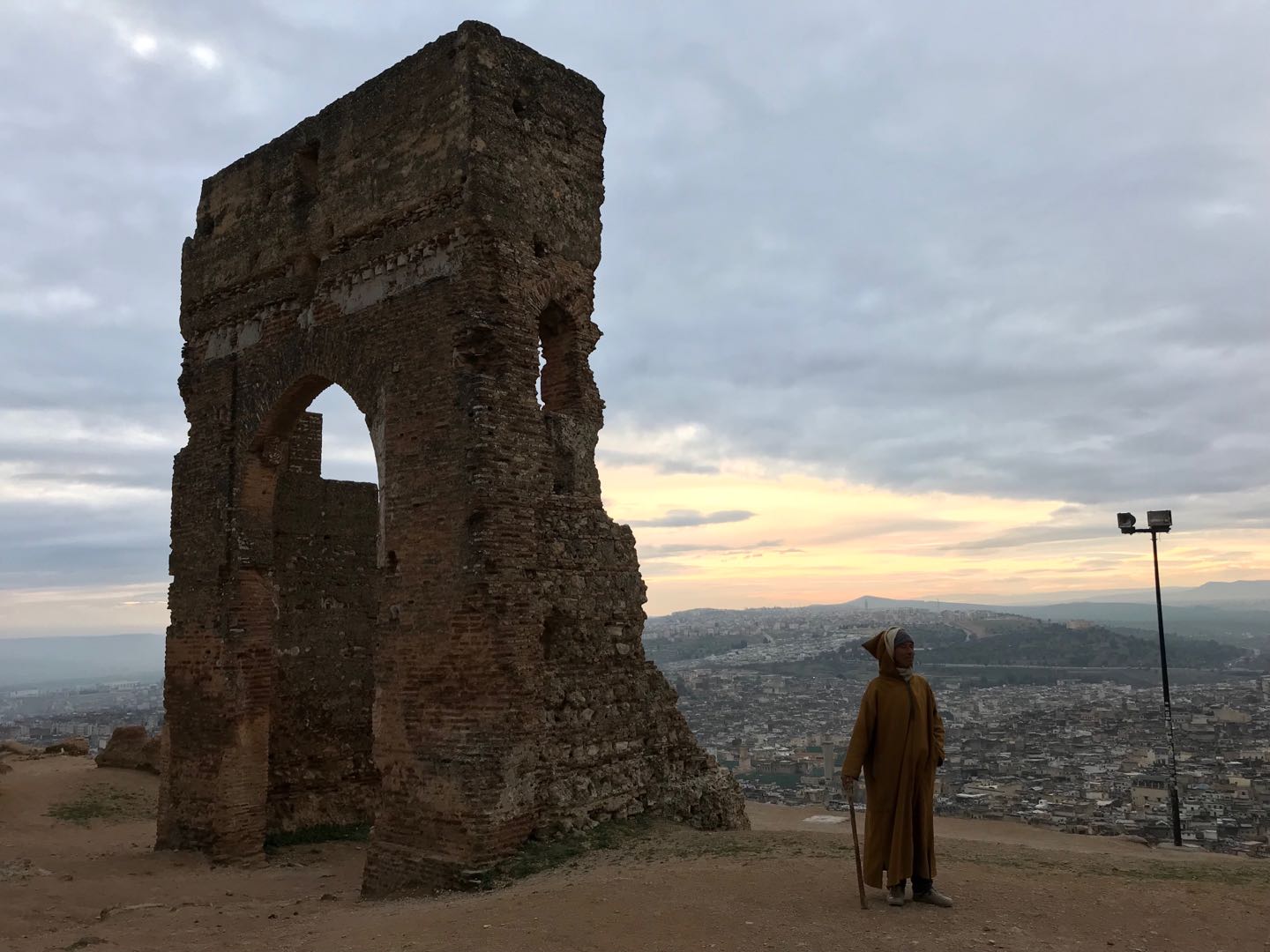
I went down towards the medina, but took the narrow backstreets since the main entrance was some kilometers away from the tomb ruins. Locals ignored my presence and continued the pace of their regular life: tending to their donkeys, preparing bread, pulling carts, and making crafts. I made it out of the labyrinthine residential quarters, just in time to see the town’s marvelous historical sites before the arrival of tour groups. It was at this time that I truly began enjoying every single moment of my Morocco journey — only from Day 4.
From the earthen and warm alleys of Fez, I traveled further south to the cultural city of Marrakesh which I used as a base for exploring more regions of Morocco. My first tour from and back to Marrakesh was on the country’s Atlantic coast, in the airy and laid-back city of Essaouira. The following day I traveled south to the Berber villages situated on the valleys of the Atlas Mountains. The last tour from my Marrakesh base brought me towards the country’s eastern border, starting from the ksar (fortified village) of Ait-Benhaddou and ending with an overnight camping at Erg Chebbi, on the outskirts of Merzouga.

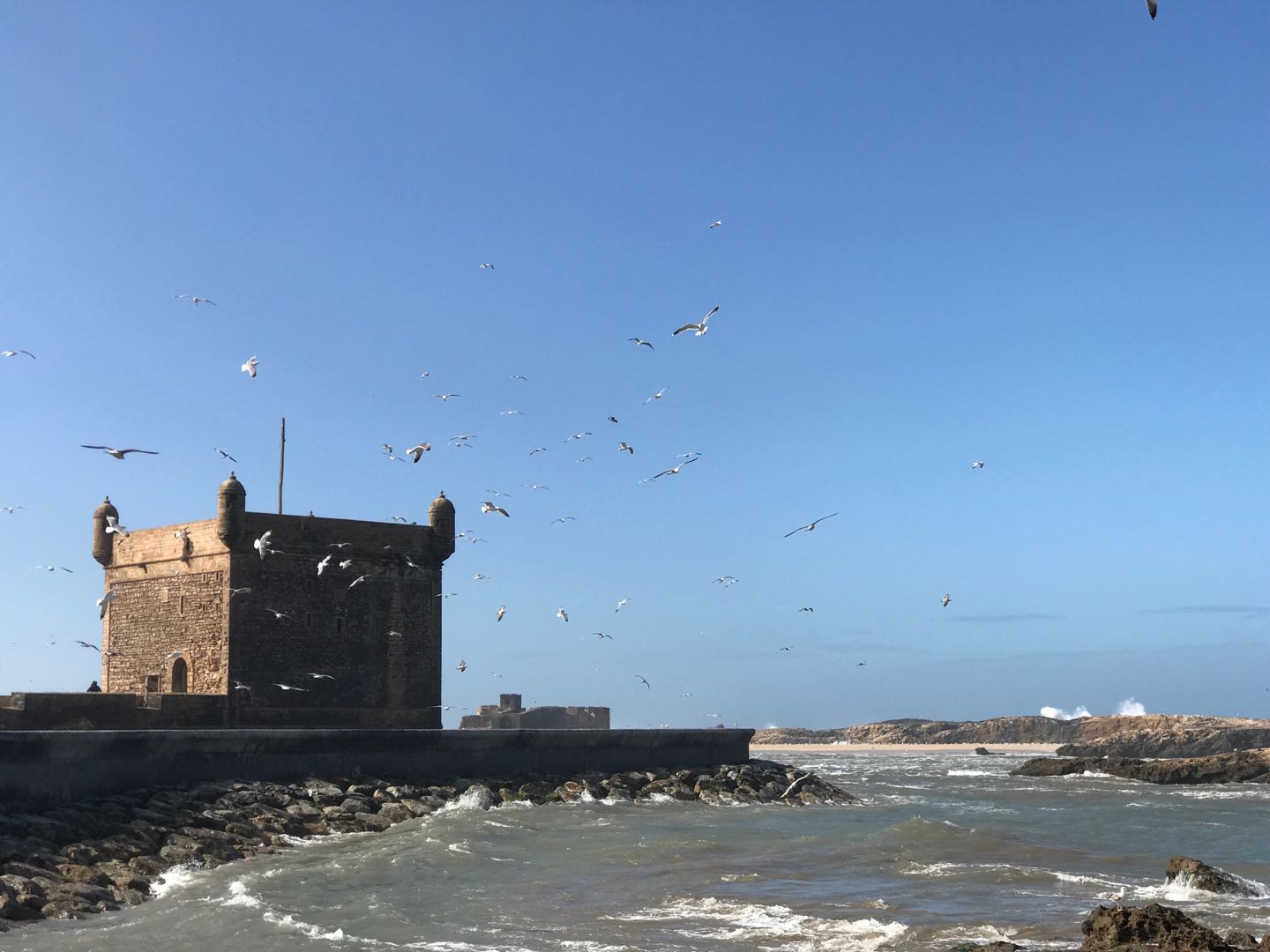
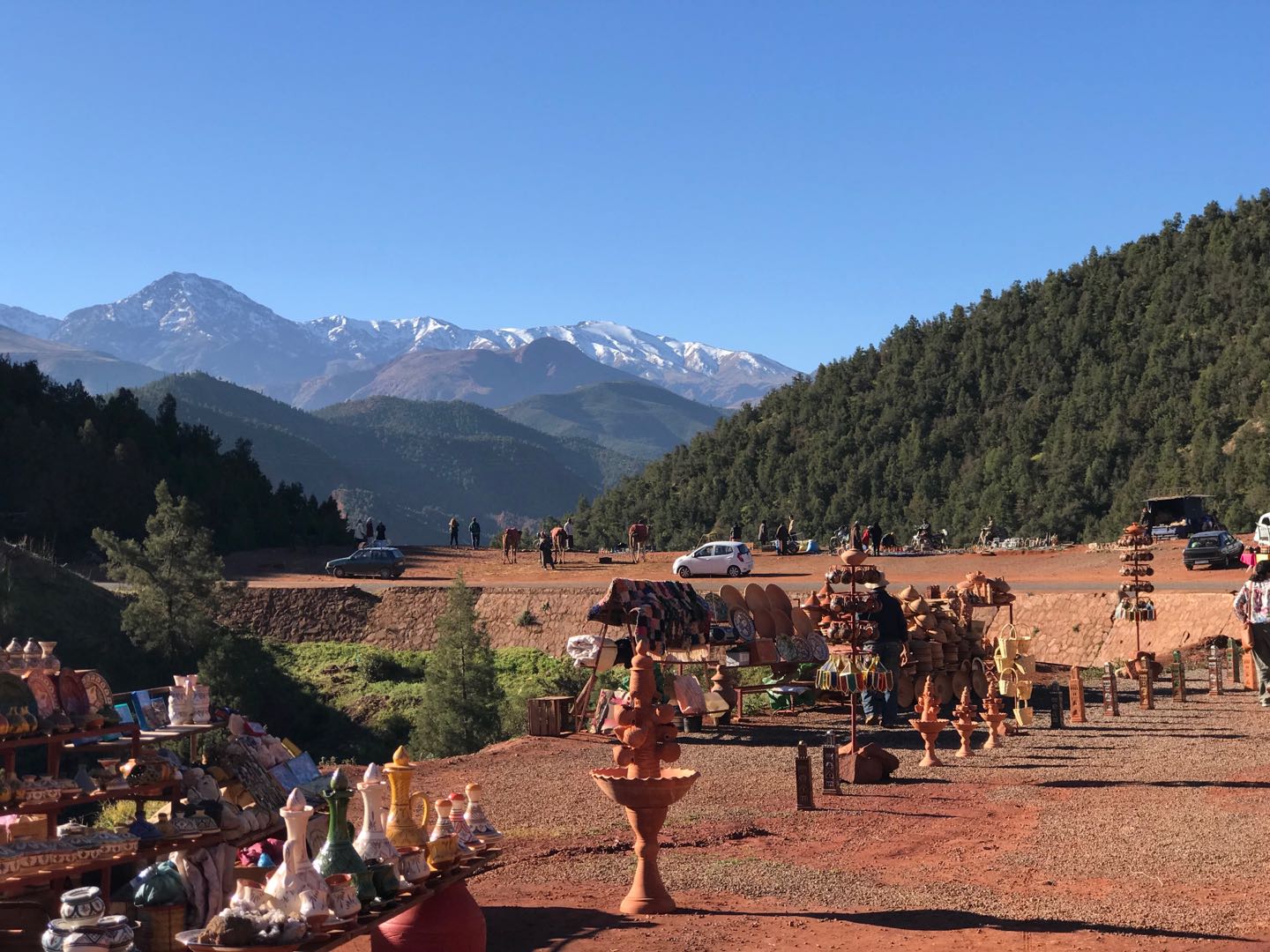
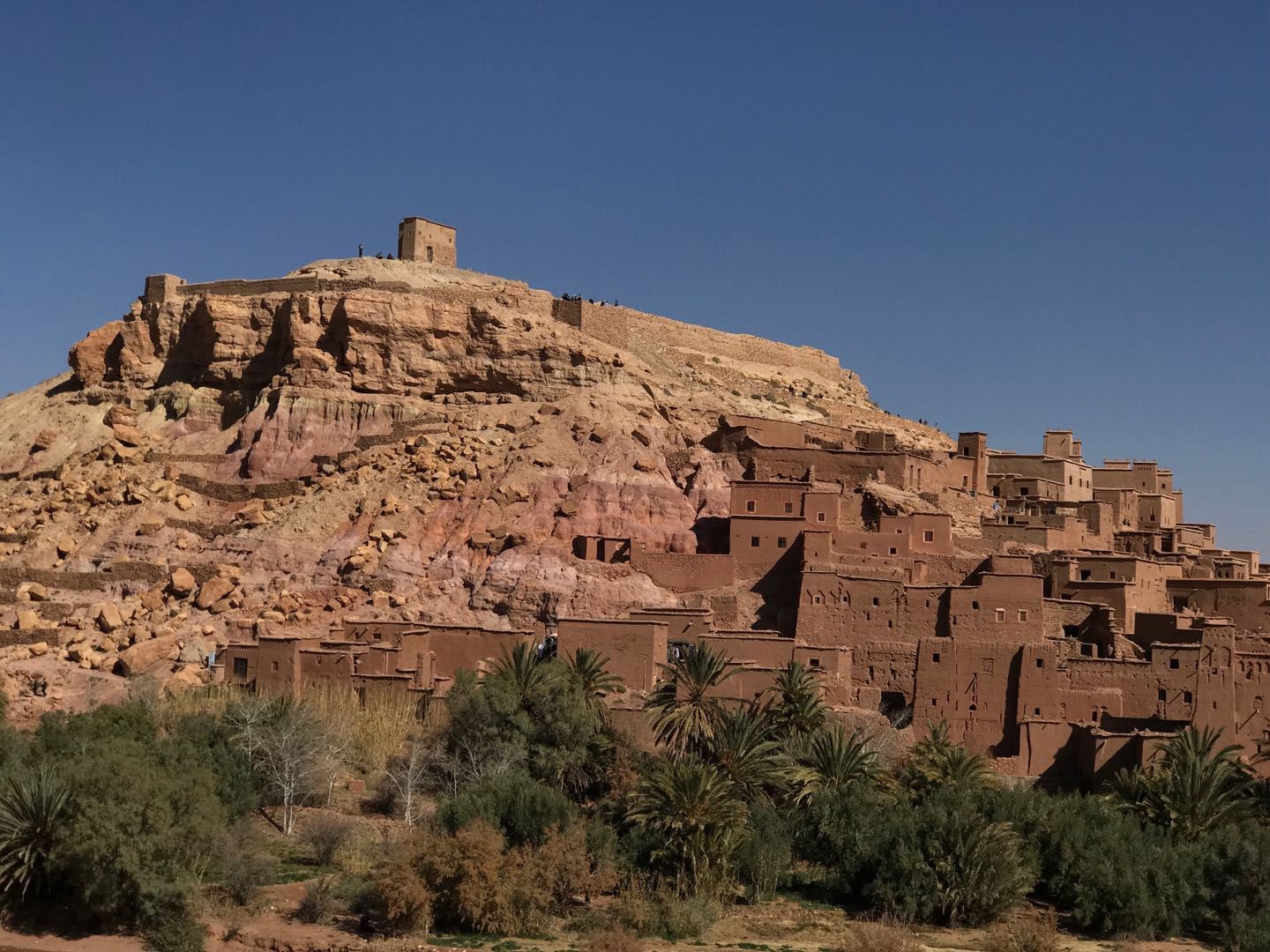
On those trips, I had met a number of tourists with whom I would have great conversations about life, specifically about living in the moment and taking chances. Gui, a Portuguese traveler who was with me on the Atlas Mountain trip, learned about my then-upcoming pilgrimage and advised me not to proceed simply because “there was nothing to see on the road.” Carmen, a Mexican lady who belonged to the other group of tourists going to the desert camp, felt inspired after hearing about my pilgrimage plan.
I had to ride a camel towards the desert camp. It was pleasurable in the beginning, then became a grueling ride later on as the camel stepped unevenly into the dunes. The landscape, however, was immensely thrilling due to it being the fifth distinct terrain I had experienced in Morocco.
We reached the desert camp just before sunset. The group I was in, composed of two German sisters, an Australian, and a Korean couple, arrived first so we had the chance to select our own tent. Our local Berber guide talked about how Moroccans go on with their daily lives despite their poverty:
“The problem that most rich people have is that they spend their time trying to get richer. We Berbers don’t have that much money, but we’re happy because we use our time to be happy.”

We spoke more about our own journeys until he left us to help the other guides prepare dinner. Our group strolled across the camp and rested on a small hill on where a couple of sandy Moroccan carpets were laid out.
I laid down on one of them and waited until small pecks of lights slowly punctured the gradually darkening purple sky. I spotted Orion easily, then looked for Sirius, then completely lost my sense of direction until one of the German sisters brandished her smartphone and opened an app that tracks the night sky.
The group of tourists that included Carmela finally arrived, as the guides finished preparing our dinner: a combination of couscous, chicken tagine, and tangerines. We feasted to the tune of Moroccan tribal melodies played by the local guides. Carmela and her Mexican-German friend Mariela came to my table and asked if I would be going back to Merzouga by camel or by jeep. I told them I preferred the camel so I could take more photos of the desert landscape.
Once everyone at the camp dozed off, I sneaked out and spent a couple of minutes looking at the clear sky. The last time I saw such an amazing view was over 15 years ago back home, when I set up a small deck at our rooftop and tracked the major planets using the telescope my dad gifted to me. I was ecstatic but speechless when I ran towards mom to share my pleasure of seeing Jupiter and its four moons, Saturn and its rings, and many other celestial objects. This endeavor would continue once a week until I grew out of it, in part when I moved to the city where lights would often pollute the night sky.
The combined tour groups set off for Merzouga the following dawn, when Venus was still brightly twinkling in the sky. Luckily, I got a different camel with a different saddle, making the return journey more comfortable. From the village, we would embark on an eight-hour drive back to Marrakesh where I would fly to Lisbon two days later.
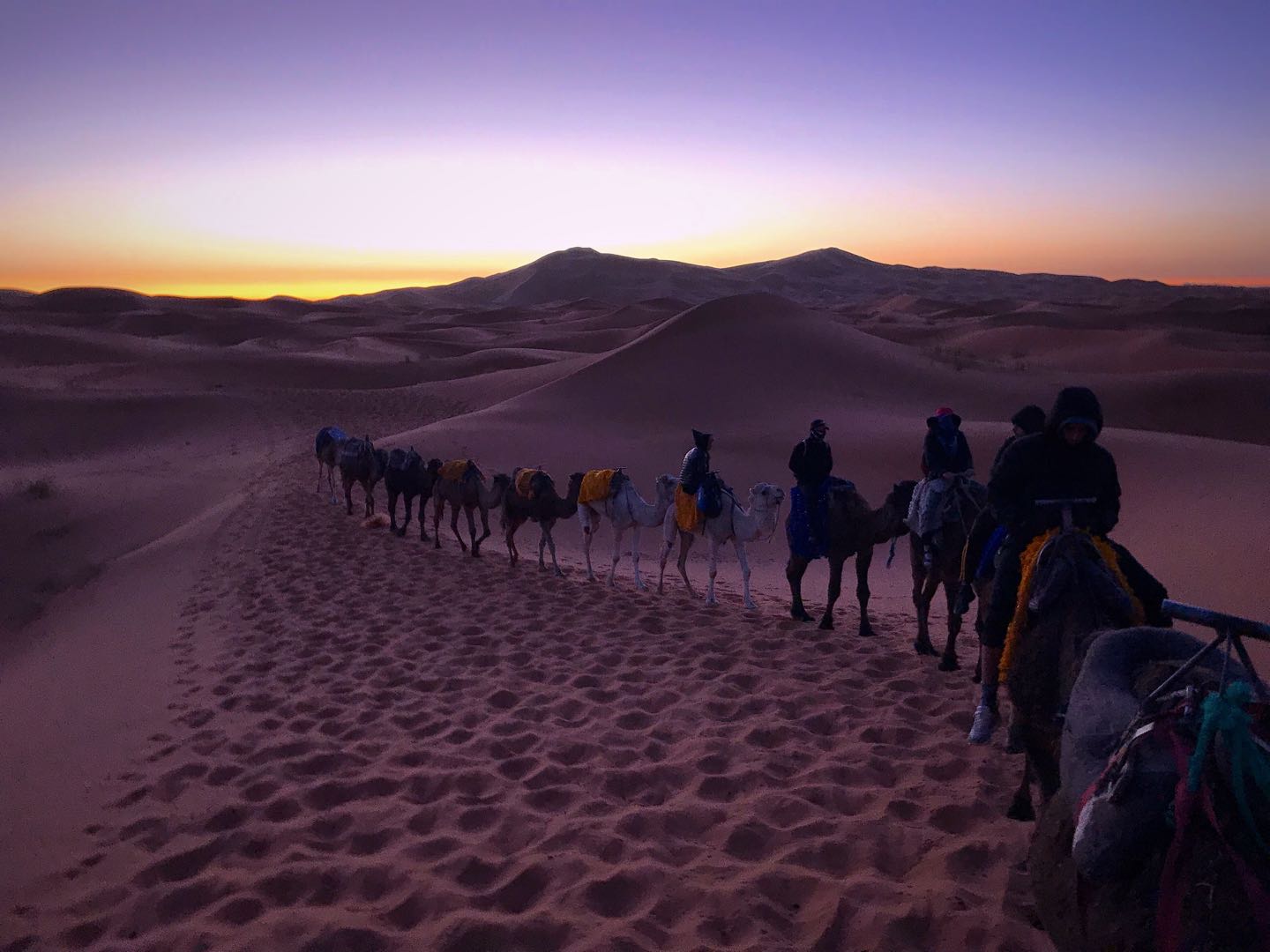
Photos: Andy Penafuerte III

Pingback:A Passport to Adventures: A Decade of Journeys - coolkidandy
Pingback:A Passport to Adventures: Journeys That Defined My Decade - coolkidandy
Pingback:A Passport to Adventures: The Journeys That Defined My Decade - coolkidandy